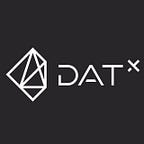[DATx Digital Advertising Mini Class] Week 3: How is Value Calculated in Digital Advertising?
If digital advertising wasn’t profitable, we wouldn’t be writing about it. With digital advertising raking in such a large portion of advertising budgets, how exactly is its value measured?
For this lesson, we’ll delve into digital advertising pricing models and their respective advantages and disadvantages.
Pricing models in digital advertising follow metrics reported by publishers. These metrics revolve around either website resources used (ad impressions) or effectiveness of ads (clicks, leads, actions). As the industry itself have evolved, so have trends in pricing models.
CPI/CPM (cost per impression/cost per mille or cost per thousand impressions) is the most common pricing model, and one of the earliest pricing models in digital advertising. In this model, publishers charge advertisers per million ad impressions. A carryover from traditional forms of advertising, it was introduced to digital advertising by Netscape and Infoseek after they changed their pricing model from fixed rate to CPM.
By measuring impressions, it takes into account that exposure to ads will prime users to remember the product/brand. However, without measuring actual engagement with the ad, there is no way for this pricing model to reflect the ad’s effectiveness. CPM is suited for advertisements trying to build branding.
CPC/PPC (cost per click/pay per click) is another common pricing model. Unlike CPM, CPC/PPC is a performance-based advertising pricing model; it measures how many clicks an advertisement receives, regardless of impressions.
CPC originated as a way for search engines to monetize their services. Pioneered by Goto.com, which later became Overture and sold to Yahoo, the CPC model was adopted and optimized by Google, through an algorithm that gave ad placements to better performing ads. Today, the CPC model is common for display advertising as well.
CPL (cost per lead) is a pricing model where advertisers pay publishers for every subscription or sign (marketing lead) up an ad leads to. This pricing model is even more advertiser friendly than CPC. It eliminates the possibility of advertisers having to pay for accidental clicks and views. The 2008 Obama campaign was carried out on a CPL pricing model.
CPA (cost per action) is even more specific than CPL. It requires users to actually make a purchase or sign up for a service. CPA is the most ideal for industries that have a high barrier of purchase.
Other more niche pricing models such as CPF (cost per follower), for social media and CPI (cost per install) for apps have also appeared in the last decade, reflecting the ability of the industry to adapt quickly to new technologies.
Ultimately, all pricing options are calculated through eCPM (effective cost per mille), which translates to effective revenue per thousand impressions for publishers. CPC, CPL, CPA, and various other pricing models can be calculated as eCPM through estimating the CTR (click-through rate) and conversion rate:
eCPM = CPC * Predicted CTR * 1000
= CPA * Predicted Conversion Rate * Predicted CTR * 1000
This measurement’s effectiveness depends on the accuracy of the CTR and conversion rate. With decreasing accuracy, risk increases for publishers.
In effect, publishers will sell as much inventory, or ad space, with CPM as possible, with remaining inventory sold in CPC, then CPL, then CPA as final resort. With auctions style selling, various pricing models are eligible during the same bid, and publishers use CPM calculations from the above formula to decide how to sell their ad space, while taking into account risk.
Moving from CPM to CPC to CPL to CPA, efficiency increases but scalability decreases and effort required increases. CPM will always be important for advertisers’ branding needs. However, in the near future, with predictive algorithms for optimization increasing, conversion-based pricing has begun to gain higher adoption.
DATx Token Economy
As opposed to the traditional digital advertising economy, the DATx ecosystem runs on a crypto token economy. The key difference lies in the functionalities of the DATx token.
DATx token offers a number of advantages:
· International transactions will not only be faster, but be free of exorbitant bank fees
· Smart contracts allow the system to settle bills automatically and transparently without the need for third party intermediaries
· Large scale incentivization for positive interactions is made possible with a token incentive system built onto the blockchain
These functionalities allow the DATx ecosystem to operate in a more transparent and efficient manner. Circulation of DATx token in the ecosystem is powered by incentivization:
Users: DATx tokens are awarded to users for providing their behavior data and providing feedback, contributing to the optimization of ad campaigns. This includes: user engagement with ads, user evaluation of ads, user engagement time, user conversion behavior, etc. In addition, the system will also distribute a small amount of incentives to individual users fairly and periodically, similar to lottery draws, based on active user interaction with DATx ads.
Publishers: DATx tokens are awarded to publishers from accessing the ad SDK supported by the DATx protocol. Token rewards are awarded according to website traffic quality rating.
Advertisers: Advertisers can purchase traffic by holding DATx token while referring to POS. Advertisers may obtain discounts on their advertising requirements by holding enough DATx token for a long enough time. The previous publisher could use the DATx token that was previously incentivized by the platform to continue to buy and sell ads in the DATx advertising system (the publisher becomes the advertiser’s role at this time) to gain more users.
As new technologies are introduced, digital advertising economy will adapt. The introduction of DATx token will bring about a new digital advertising landscape, one powered by incentives optimizing ad effectiveness.
